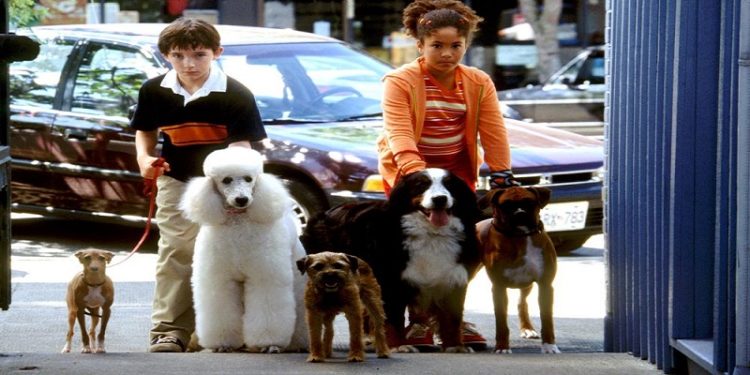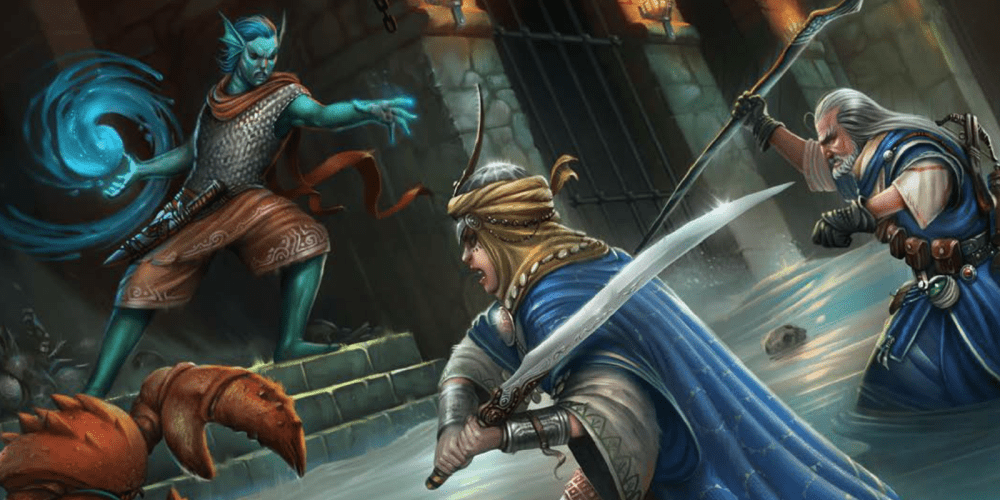Playing Canines in Your Game P1

Many times, roleplaying games give information without giving the DMs anything to work with as far as how they might act as real-world creatures. But in order to help out the suspension of disbelief, DMs need to be able to show how they should *typically* act.
Overview
With only a few notable exceptions canines, in general have relatively long legs and lithe bodies, adapted for chasing prey, as well as non-retractable claws and a bushy tails. Their walk is digitigrade, meaning they walk on their toes. Almost all canines are social animals and live together in groups, consisting of either family groups, or in some cases, packs.
Young canines are born blind, and deaf with their sense of hearing coming first, and their eyes opening a few weeks thereafter. It is during this blind stage, if taken from their mothers and hand-fed that they can adapt to being around specific humanoids. This is not to say that they will allow just anyone near them after this initial bonding stage. Wolves are blind for longer than dogs, and due to this, dogs and wolves respond differently to situations. Wolves due to their prolonged helplessness as pups, are more skittish, more wary of new experiences because they are not exposed to as many things. Generally speaking, on the basis of their experience, ‘tamed’ wolves are strictly “one-man dogs”. They may be confiding and playful with the man (or woman) who raised them, or even with his (her) whole family, if fed and cared for by them, but they are suspicious and timid in the presence of strangers.
Dog puppies, on the other hand, are able to explore their world more with their eyes open and familiarize themselves with more things, so when they are older, less frightens them.
Senses
- Eyesight: Canines have wide peripheral vision and perceive browns, yellows, and blues, but just because they can’t see the color red or green doesn’t mean they can’t distinguish green, yellow or red objects based on their color, but have to rely on the perceived brightness of the objects to tell them apart. Purple and blue are both seen as shades of blue. Greenish-blue is viewed as a shade of gray. Red is seen as a black or dark gray. Orange, yellow and green all are seen to a dog as various shades of yellow. Dogs can see best at dusk and dawn. Their low-light vision is much better than a human’s, but their overall vision is not better.
- Hearing: dogs can hear the range of 67-45,000 hertz, depending on the breed of dog. They have 18 or more muscles in their ears allowing them to move in the direction of the sound. Breeds with perked ears can usually hear better than dogs with drooping ears.
- Smell: dogs can have up to 300 million olfactory receptors in their noses, compared to about 6 million for humans. The part of a dog’s brain devoted to analyzing smells is, proportionally speaking, 40 times greater than a human’s. When dogs inhale a fold of tissue just inside their nostril helps to separate the functions of breathing and smelling. 12% breathed in detours into a recessed labyrinth of scroll-like bony area in the back of the nose that is dedicated to smelling. Tissue receptors in this area “recognize” these odor molecules by their shape and send signals to the brain for analysis. As dogs exhale through their nose’s side slits, the swirling exhaled air brings new odors into the dog’s nose, allowing dogs to smell more or less continuously.
Dogs have a second scent-related capability to smell pheromones made possible by an organ known as Jacobson’s organ which is located in the bottom of a dog’s nasal passage. - Taste: Dogs have 1700 taste buds. In addition to with the same taste buds for sweet, salt, sour and bitter that humans have, they also have specific receptors that are tuned for meats, fats and meat related chemicals. Dogs will tend to seek out, and clearly prefer the taste of things that contain meat or flavors extracted from meat. They also have taste buds that are tuned for water which have evolved as a way for the body to keep internal fluids in balance after the animal has eaten things that will either result in more urine being passed, or will require more water to adequately process.
- Emotions: Animals can emotions; it is a universal animal language. Canines interpret human emotions such as worry, anxiety, fear, anger, pity and nervousness, as weaknesses and they do not listen to these emotions. They listen best to someone who is calm but firm in their approach. It is this sense that they use to determine who should be the leader of their pack. The being with the strongest and most stable energy is the one they look to, be it themselves or another being around them. While you can hide your emotions from another human, you cannot hide them from a dog.
Drives
- Pack Drive– canines are social animals and do best living within a pack environment rather than solitary and will naturally find their place in the pack.
In the case of tame dogs (as compared to wild ones), the owners are at the top because they will provide the basic elements they require to live. Being a calm and effective leader is the best way to strengthen the pack dynamics. The best pack leaders are master manipulators of the environment and resources not by being “dominant” as many people assume.
Abandoned dogs will often become feral and come together in cohesive bands and attack the young, unwary, old, weak, and/ or injured. - Prey Drive is the instinct that makes many dogs love to locate, pursue, and catch game. Prey drive also translates into a dog’s motivation to perform. Most dogs don’t hunt for food so prey drive is used most during play but that doesn’t mean they won’t hunt, chase, capture or kill prey animals. Chase games, fetch, tug, herd the children or other dogs are all examples of ways they might use their prey drive.
- Food Drive: the drive to eat. Withholding a meal and using food as a reward for doing tricks helps to train them.
- Defense Drive keeps dogs on their toes and has an impact on how confidently they deal with stress and new things in life. This occurs when something new comes into the territory (or they enter a different territory) and they will chose from one of the following:
- Flight: To flee from a perceived threat (death, injury, etc.) is generally the first instinctive response.
- Fight: To ward off/ eliminate the perceived threat.
- Freeze: fixed look to the dog’s eye and he is rigid throughout his body, even appearing to hold its breath.
- Faint: see a more pronounced version of the freeze where the dog drops belly down to the ground and refuses to move or interact.
- Fidget/ Fool Around: It is a form of displacement behavior – taking the focus off of one situation onto another. Dogs that rush about, jump up and down, become rough or over the top, who can’t sit still, who lick you constantly or who drop into a roll to show their bellies every time someone approaches or touches them can fall into this category.
- Sex Drive: all dogs practice it at some point, even if it’s humping their master’s leg. Humans manipulate this drive by breeding or spaying/neutering their pets.
As you can see there are a variety of things RPGs leave out of canine behavior. While this article mainly focused on dogs and wolves, it’s still applicable to foxes as well. Like, comment and reshare if you want.



